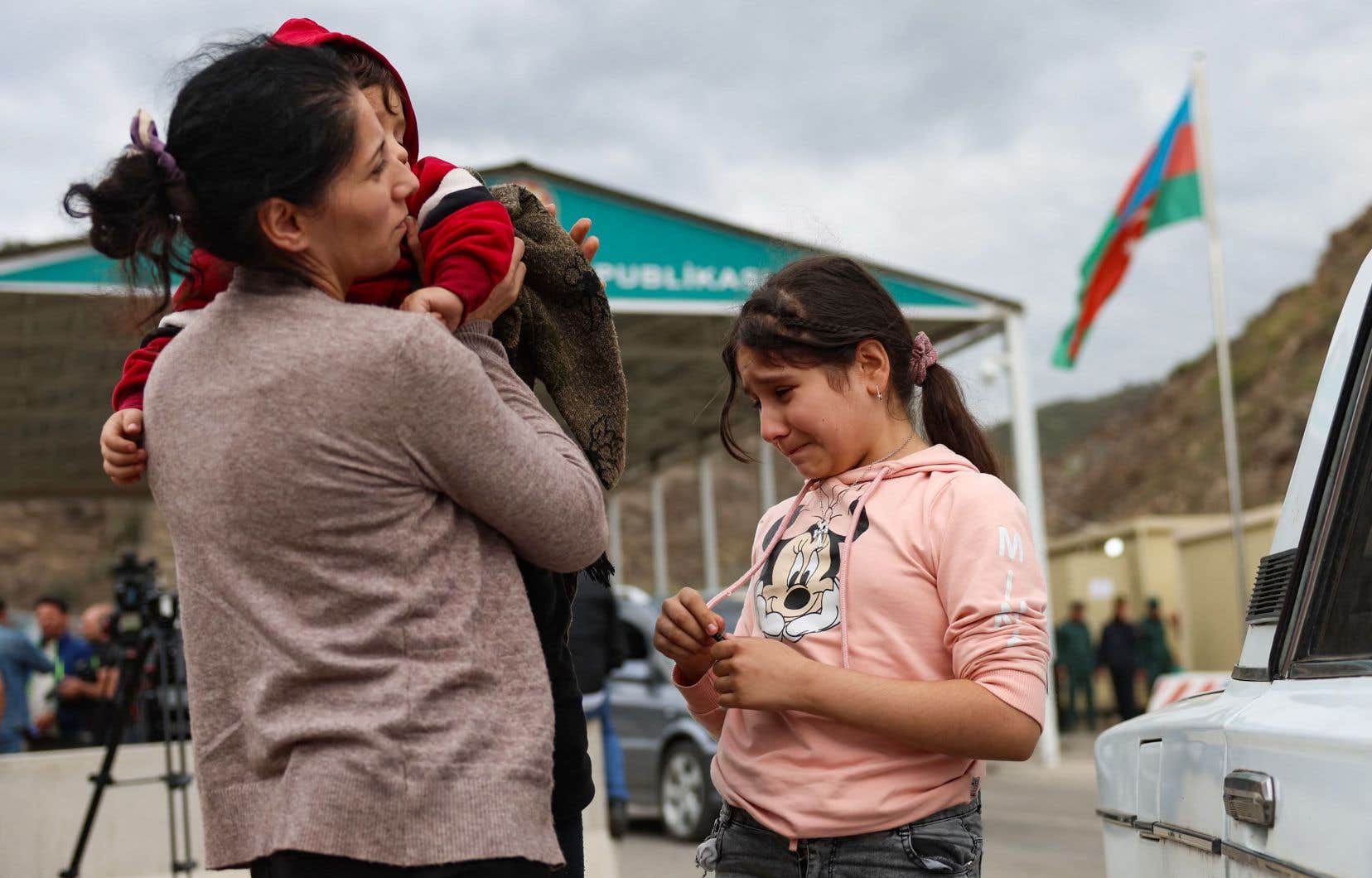Nagorno-Karabakh is emptying of its inhabitants. On Tuesday, tens of thousands of men, women and children continued to leave this enclave populated by Armenians under the victorious gaze of Azerbaijani soldiers.
An old man and his van full of packages, a little girl, her pink balloon stuck to her, her gaze fixed on those of the heavily armed Azerbaijani soldiers. And this old lady desperately holding a birdcage.
On the Azerbaijani side of the Hakari bridge, at the border post installed in April by Baku and which blocks access to the Lachin corridor, on the only road leading from Armenia to Nagorno-Karabakh, the flow of vehicles is continuous.
On Sunday, after the lightning offensive won against the troops of Nagorno-Karabakh, Baku reopened this border post which cut off the Armenian enclave from the rest of the world, causing the exodus.
On the roofs of cars, refugees take what they owned in Nagorno-Karabakh: a pink bag, a chainsaw, blankets, sometimes protected by tarpaulins.
Rare vehicles, sluggish Soviet Ladas or trailers with flat tires, pass through a metal detector.
But for most, the shutdown only lasts a few seconds. Azerbaijani soldiers check trunks, peeking inside, without asking for any identity document.
The men are asked to come down to fix surveillance cameras, placed high on poles, next to an Azerbaijani flag fluttering in the wind.
The orders, sharp, burst out: “Look up! » The maneuver is intended to identify possible perpetrators of “war crimes” fleeing Karabakh, an Azerbaijani government source explained to AFP.
The drivers get back on. Male passengers have to walk the few meters that separate them from Armenia. Chins held high for some, they pass in front of the green uniforms of the soldiers posted to the side, without a glance for them.
“They kicked us out!” », says a man before crossing the bridge.
80 kilometers, 24 hours
After passing the check of the Azerbaijani soldiers, a few agree to speak. Some say they leave with regret and want to return. Blue suit jacket too big, Hrant Haroutounian shows his blue Armenian passport.
“The Armenians told us to leave. I go to Yerevan, I have children there. I want to take them and go back,” says the 83-year-old man. Others say they were ordered to leave by Karabakh soldiers as Azerbaijani forces approached.
The engines roar and the vehicles finally set off towards the bridge, at the end of which a tank from the Russian peacekeeping force is parked.
Five kilometers further, at Kornidzor, at the first Armenian checkpoint, the same closed air, the same overloaded Ladas with chassis brushing the ground. Sometimes the haggard face of an old man or those of children emerge.
Many say it took 24 hours to travel the 80 km separating the separatist capital, Stepanakert, from the border.
A journey made without food and sometimes without water: Nagorno-Karabakh, subject to Azerbaijan’s blockade for months, lacks everything. In recent days, refugees say they have spent them at home, without daring to go out, eating on reserves.
“I left my house to stay alive,” asserts a woman in a green jacket, who insists on speaking: “Let the world know that we are homeless dogs now!” »
Away, in the village of Kornidzor, Sveta Moussaïelian is resting with a friend she met in 2020: she had taken refuge there during the previous war between Armenia and Azerbaijan.
At 50, this is the fourth time she has been forcibly displaced. “I’m not that old, but I’ve already seen so much! »
Sveta traces the history of her family: there are five sisters, four of whom are war widows. His two sons were soldiers, they came out alive from the last battles and are in the process of leaving Karabakh.
So she considers herself lucky: “Losing my country, my home, it’s not serious, it’s for the victims that I cry. »
Goris, refugee crossroads
Upstream of the Armenian police checkpoint, hundreds of cars are parked in disarray. These are Armenians who came to pick up their loved ones.
“I’m waiting for my sister’s family. They have been on the road since yesterday,” says Artak Soghomonian, looking exhausted. As there is no network on the road, he does not know where they are or when they will arrive.
His brother also wants to leave Stepanakert, says Artak, 36 years old. But he is still looking for gasoline and has therefore not managed to leave.
A dangerous quest: Monday evening, an explosion in a stormed fuel depot in Stepanakert killed 20 people and injured more than 200.
On the road, around the few cafes and gas stations separating Kornidzor from Goris, the large nearby city, refugees gather. Some refuel in silence, others carry out some repairs to their vehicles.
At the sight of Armenian police officers, many drivers stick their heads out of the cabin: “Goris? », they ask. The quiet town of 20,000 inhabitants has become the crossroads for refugees from Nagorno-Karabakh.
